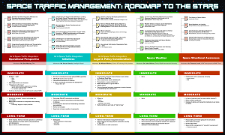Integrating Commercial Space Operations into the National Airspace System
Presentation Type
PowerPoint only (no paper)
Location
Henderson Welcome Center
Start Date
17-11-2016 10:30 AM
Abstract
The next decade will witness an increasing number of commercial suborbital space flights which may ultimately lead to the development of commercial suborbital transportation. As part of the long term plan for these flights it is important to define the risks to civil aviation and the hazards that may arise from the interaction of suborbital spacecraft with controlled air space. To do this the National Airspace System will need to accommodate a growing number of spacecraft. Flight profiles for these spacecraft are very distinct from conventional commercial aircraft operations. This means that space/airports supporting these spaceflights will need to coordinate launch and re-entry phases with regional air traffic control and space traffic management control centers to ensure the spacecraft and aircraft operators have the necessary situational awareness to safely transition vehicles through air traffic routes.
To achieve safe air traffic management control centers will need to coordinate air and space traffic activities in the national airspace system by issuing restrictions, re-routing air traffic, instructing a spaceport to delay a launch, and directing suborbital vehicles in the event of an emergency. To that end Embry-Riddle’s Suborbital Spaceflight Simulator and Mission Control Center is being used to develop traffic management strategies to safely and efficiently accommodate suborbital vehicles into the NAS by identifying airspace restriction requirements and developing mitigation options for potential impacts while providing increased SA during nominal operations.
Keywords: airspace, mission control, national airspace, simulator, situational awareness, suborbital,
Area of Interest
Space Situational Awareness
Biographies

Integrating Commercial Space Operations into the National Airspace System
Henderson Welcome Center
The next decade will witness an increasing number of commercial suborbital space flights which may ultimately lead to the development of commercial suborbital transportation. As part of the long term plan for these flights it is important to define the risks to civil aviation and the hazards that may arise from the interaction of suborbital spacecraft with controlled air space. To do this the National Airspace System will need to accommodate a growing number of spacecraft. Flight profiles for these spacecraft are very distinct from conventional commercial aircraft operations. This means that space/airports supporting these spaceflights will need to coordinate launch and re-entry phases with regional air traffic control and space traffic management control centers to ensure the spacecraft and aircraft operators have the necessary situational awareness to safely transition vehicles through air traffic routes.
To achieve safe air traffic management control centers will need to coordinate air and space traffic activities in the national airspace system by issuing restrictions, re-routing air traffic, instructing a spaceport to delay a launch, and directing suborbital vehicles in the event of an emergency. To that end Embry-Riddle’s Suborbital Spaceflight Simulator and Mission Control Center is being used to develop traffic management strategies to safely and efficiently accommodate suborbital vehicles into the NAS by identifying airspace restriction requirements and developing mitigation options for potential impacts while providing increased SA during nominal operations.
Keywords: airspace, mission control, national airspace, simulator, situational awareness, suborbital,


Comments
Visit the Research Panel: Through the NAS